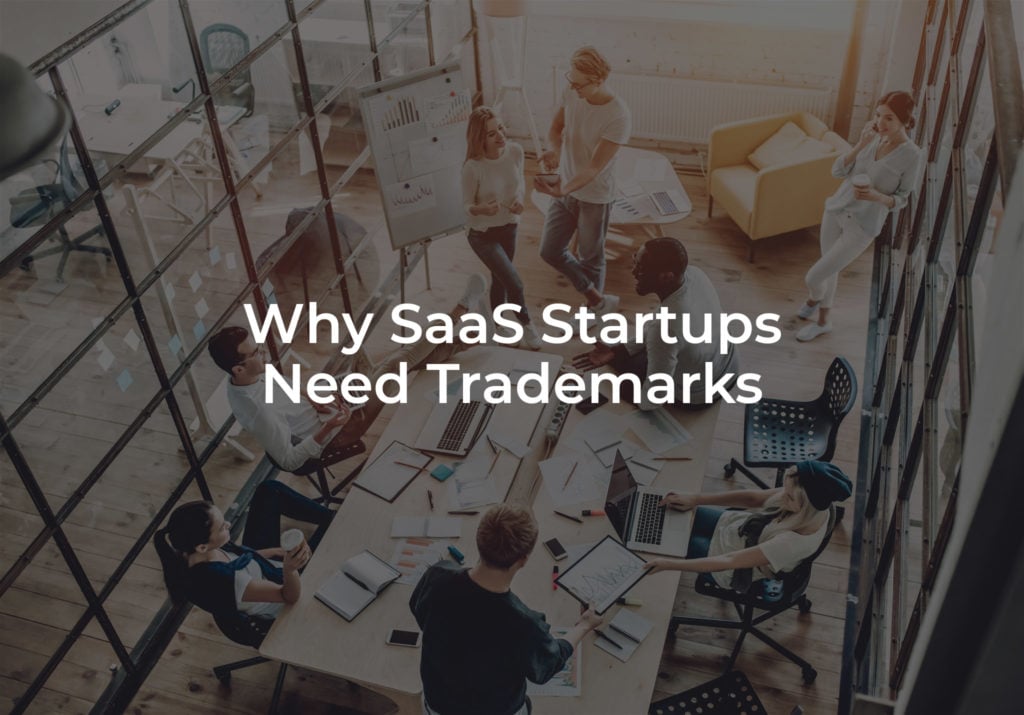Establishing your brand is an important process for any business. Branding helps form your company identity and allows you to build brand awareness. In the tech industry, establishing your brand is even more critical as competition can be fierce, making being able to differentiate your business and the goods or services you offer important to help stand out in a crowded field. Consequently, establishing trademark protection early on is crucial for protecting the reputation and customer goodwill being built under your name or logo, and for ensuring that you and you alone have the rights to operate under that mark.
In many cases, you will find that your brand and accompanying intellectual property are the most valuable assets for ensuring your business’ future. Trademarks operate under a “first come, first served” system, so prioritizing establishing your marks early on is very important to guarantee you successfully claim those rights.
This article will show you why SaaS startups need trademarks and how they can benefit your company.
Benefits of Trademarks for SaaS Startups
When you secure trademarks for your SaaS, you create a level of protection. Trademarks provide the groundwork for building brand recognition and prevent competitors from copying or stealing your brand by using identical or confusingly similar marks with their competing business.
As a SaaS startup, it’s vital that you establish and maintain a positive reputation. This will encourage sophisticated consumers to choose you over a competitor, and help draw in talented and knowledgeable employees to work for your business.
Securing your trademark protections early helps you avert legal problems in the future. If you wait to register, a competitor SaaS company can take steps to begin using a similar name or logo and potentially pursue register before you have the chance to do so. In this case, the competitor may have senior legal right to the marks, and you could be forced to start over and rebrand.
Unlike other intellectual property tools, a trademark can be for life. Once established, a trademark registration is initially provided for a term of 10 years; however, you can continue to maintain the registration for subsequent periods by filing appropriate renewals and maintenance documents wherein you establish that you have continued to use the mark in commerce. This means you have the potential to benefit from your trademark ownership for decades to come
Having your SaaS startup protected with trademarks gives your business a sense of autonomy. You create an identity and establish yourself as different from the rest of the market. When consumers are looking for your products and services, this allows them to quickly and easily find your business as opposed to that of a competitor.
What Do Trademarks Protect?
A trademark is one of the tools you can use to protect your SaaS intellectual property, and you will use it in conjunction with copyrights and patents. A trademark protects words, phrases, slogans, symbols, and designs used to indicate the branding or source of the goods and services being offered to consumers. Likewise, a trademark may be used to protect a combination or composite of these elements.
The purpose of a trademark is to identify the source of a particular good or service and ensure consumers are dealing with the business they intend to. In such, the trademark distinguishes your company from your competitors who are performing a similar service or selling a similar product as they would be unable to use a confusingly similar mark.
Trademark protections are what you would use to protect your SaaS brand, whereas patents protect your underlying software invention and copyrights protect your original artistic works (e.g., the literal written code or other written or drawn works).
Creating a Strong Mark
The first step is choosing a mark that not only represents the concept you wish to portray for the business, but that is both federally registerable and legally protectable. Therefore, it is important to start by choosing a mark that is not likely to be confused with the mark of another company. Both examiners with the U.S. Patent and Trademark Office when determining registrability of a mark and courts when looking at issues of potential infringement will use standards of whether the conflicting marks are likely to cause consumer confusion. This likelihood of confusion could result from how a mark looks or sounds, the similarity of the goods or services being offered, the commercial impression given by the mark, among other various factors. These factors are weighted and assessed on the whole to determine whether consumers may confuse the marks. Consequently, it is possible to have even identical marks so long as the marks are otherwise distinct enough that consumers would not believe they come from the same source (e.g., the marks are being used for completely unrelated goods or services which are not typically offered by the same company, purchased or used together, etc.). Generally, whether goods or services are related will be broadly interpreted, so it is best to ensure that if the marks are similar, the goods and services are not.
Next, consider the strength of your mark. Generic names and words are not registerable on their own. Examples of generic terms include the wording “computer,” “tablet,” or “cell phone.” Descriptive terms, which provide some indication as to the nature of the goods or services, likewise are not registerable on their own. An example of a descriptive term would be using “fast” or comprehensive” to describe your software.
The strongest marks are those which are merely suggestive, fanciful, or arbitrary marks. These are inherently distinctive and more easily enforceable as they more clearly identify a source due to their novelty.
What’s The Difference Between a Trademark and Servicemark?
Once you’re ready to register for protection of your mark, you’ll need to decide whether you should register for a trademark or service mark. A single SaaS business may need to register both a trademark and a service mark if it needs to protect both services (e.g., the services provided through their software) and products (e.g., a downloadable form of a software provided to consumers). You’ll often hear both trademarks and service marks referred to simply as a “trademark” or “mark.”
A trademark is used by businesses to protect the company name, logo, sound, color schemes of the same, or names and logos used for individual products and product lines. Trademarks are useful for companies that have a range of products or services that need to be identified as all being under the single company brand. Examples of nontraditional trademarks include the Microsoft Windows startup sound, the Coca-Cola bottle’s shape, or the McDonalds golden arches, each of which uniquely indicates to a consumer the brand of the products being provided.
A service mark is similar to a trademark in that it identifies a business name, logo, and or that of its individual services and lines of services. For example, a plumbing service company would use a service mark. An example of a nontraditional service mark would be the NBC chime, which represents the NBC television service.
In the context of trademarks, a single application can encompass both trademark and service mark protections by identifying the various goods and services being provided thereunder. In such, it is important to identify how each mark will be used when preparing to file your applications.
Wondering what the difference is between a trademark, copyright, and patent? Check out this article.
What’s The Difference Between The ® & ™ symbols?
You have probably seen small symbols after a company name or other branding. They could be an ® & ™. You can only use these symbols in certain situations, though.
If you want to use the ® symbol, you’ll need to have a federal registration for the trademark with the U.S. Patent and Trademark Office. While there’s no requirement that you must use the ® symbol, it provides constructive notice to consumers that you have a trademark registration which may be enforced should they attempt to infringe upon the same.
Many companies choose to use the symbol on marketing material to immediately indicate to others that the legal rights to the name are protected. If you decide to use it, be careful to only use it with words, phrases, or logos you have already registered.
In contrast, you may use the ™ symbol any time you have a claim to trademark rights, whether under a federal or state registration or pending application, or otherwise under common law by virtue of your using the same in commerce. Before using this symbol, it is important to do your due diligence and confirm that your chosen mark isn’t already protected by another party, as you can only claim protection for marks that that a third party does not own senior rights to. If you choose to use the ™ symbol on a mark that’s already protected, then you risk facing a lawsuit from the rightful owner.
It’s always a good idea to have a skilled attorney do a thorough search for you. They will have more resources to perform an on-point search and be able to better assess the results. Once you determine that the mark is unprotected, you may place the ™ marker on the wording or logo to signal your claim to competitors.
Have Questions About Protecting Your Startup’s Brand?
As you can seem, SaaS startups need trademarks. Trademarks establishe your business as a serious one that commands respect and consideration. Likewise, you will attract higher quality consumers and employees while also preventing competitors from wrongly benefiting from your hard work and good reputation.
Investing in trademarks is investing in your future by protecting your business’ branding. It’s crucial that you work with an experienced attorney who can help you establish comprehensive protection. Further, because your protection is based on first use, don’t delay in establishing your ownership rights. Our attorneys can assist with US or international trademark applications.
Request a free consultation today and have all of your trademark questions answered by one of our knowledgeable attorneys.



